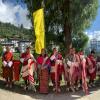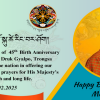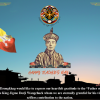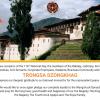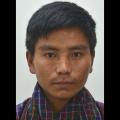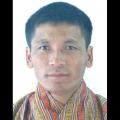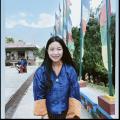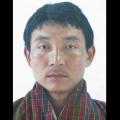Korphu
Etymology
The name Korphoog was derived from "gour pho" which literally translate to stone cave (Gour: stone and Pho: cave).
Geographical and Climatic conditions
It is the farthest Gewog in the Dzongkhag with a total area of 288.1 Km sq. It is located to the left side of the mangdue-chu river. The Gewog falls geographically to the south of the Dzongkhag and shares boundary with Langthel Gewog to the north, Wangduephodrang and Tsirang Dzongkhag to the west and Zhemgang and Sarpang Dzongkhag to the south. The gewog enjoys a warm temperature climate with clayey loam soil type, with an altitude ranging from about 1070 meters to 1300 meters above sea level.
Chiwogs and basic Infrastructures
The Gewog comprises of five Chiwogs namely; Korphu toed, Korphu maed, Nimshong toed, Nimshong maed and Nabji Chiwogs respectively. It consists of 3 main villages with 203 households under the gewog and 749 number of population according to the PHCB,2017. Other than the RNR office which is located at Zhilingbe near Gewog Office, BHU at Korphu and Sub-post at Nabji and Nimshong provide a basic service to the people of the Gewog. The Gewog has two primary School at Nabji and Nimshong respectively.
Biodiversity
The whole gewog area falls within Jigme Singye Wangchuck National Park with rich biological diversity. The forest is home for various animals and birds including the endangered golden langur and hornbills. The forest is also enriched with varieties of tree species (Table1) which can be used for various purposes, as well as various non-wood forest products potentially playing an important role in promoting rural livelihoods thereby alleviating the poverty of local community.
Table 1: Common Tree Species found within Korphoog Gewog
| Local Name | Botanical Name | Uses |
| Bakaling seng | Duabangga grandiflora | Plank, timber, tools |
| Gangyir seng | Alnus nepaulensis | Poles |
| Khar seng | Michelia doltsopa | Fuel wood, timber, furniture |
| Khachey seng | Juglans regia | Timber, furnitures |
| Jan seng | Schima wallichi | Fuel wood, fencing |
| Sokhoi Seng | Castonopsis hystrix | Fuel wood, Timber, tools |
Agriculture
Majority of the population are dependent on agriculture as the main source of livelihood. The public of the Gewog focuses more on cardamom cultivation. Paddy is the staple cereal crop that is cultivated on large scale by the public of Nabji and Korphu Chiwog. Whereas, for Nimshong community, maize is the staple cereal crop. Cardamom and oranges are the main cash crop, which is also the main sources of income for the public of Gewog. Of the two major cash crops grown in the Gewog i.e. Orange and Cardamom, people have now started to emphasize working more on the later one as it is found to be more profitable. As per the Gewog Agriculture data, Korphu Gewog comprises of 272.825 acreage of wetland, 1300.73 acreage of dry land and 86.33 acreage of land is covered with cardamom.
Livestock
The livestock rearing in korphu geog is mostly predominated with the local breeds of cattle and are being reared for their own consumption and when in surplus, for sales too. As per the geographical location of the places, two chiwogs of Nimshong uses animal drought power for the land tillage that is met from local breed. The cattle population is higher in this two chiwog. As per the annual livestock census 2019, the Gewog has 202 mithun crossbreed, 164 nublang-thrabam breeds and 99 jersey crossbreeds. We also have 19 horses and 15mules. In avian group we have 208 local poultry and 871 improved birds. There is a poultry backyard farms for both improved and indigenous birds for the preservation purpose as well as have a semi commercial improve poultry farm.
Culture and traditions
The Gewog is also enriched with diverse culture and traditions. They celebrate various local festivals (Table 2) where the community gathers together to witness the tshechus.
Lhakhangs
There are three lhakhangs in the gewog which are of community owned as follows:
Naboe Lhakhang (མནའ༌འབོད༌ལྷ༌ཁང༌)-Nabji chiwog
Korphu Lhuendrupcholing – Korphu chiwog
Nimshong TashiChoeling – Nimshong chiwog
Table 2: Detail of local festivals
| SL # | Name of Local Festival | Date of Festival (Bhutanese Calendar) |
|---|---|---|
| 1 | Nabji Drup | 15th -21th of 11th month |
| 2 | Korphu Drup | 15th -21th of 11th month |
| 3 | Takla Chotpa(only at Korphu) | 7th -10th of 8th month |
| 4 | Baipala | 10th of 2nd month |
| 5 | Ngipa Tsechu(only at Nimshong Chiwogs) | 8th-11th of 2nd month |
| 6 | Duiduila | 4th day 3rd month |
| 7 | lam(only at Korphu) | 11th day 2nd month |
| 8 | Goem Kangchoe(only at Nimshong) | 15th day of 12th month |
| 9 | Dangpa Ngungney(only at Ninshong) | 13th-16th of 1st month |
Click Here to View the Gewog Profile
